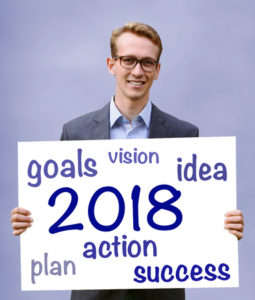What Do You Resolve to Change?
“What You Get By Achieving Your Goals Is Not As Important As What You Become By Achieving Your Goals.” Henry David Thoreau
 As we begin the year 2018 with renewed energy and commitment, dedicated leaders, just like you, are reflecting and considering changes they deeply desire for themselves and for those they lead. And, as we all know – the more challenging the change, the more attention and effort it takes to reach and sustain the change we so seriously seek (we refer to this as TARP – Change requires Time, Attention, Repetition, and Positive Feedback).
As we begin the year 2018 with renewed energy and commitment, dedicated leaders, just like you, are reflecting and considering changes they deeply desire for themselves and for those they lead. And, as we all know – the more challenging the change, the more attention and effort it takes to reach and sustain the change we so seriously seek (we refer to this as TARP – Change requires Time, Attention, Repetition, and Positive Feedback).
If you are already a student of the work of Kegan and Lahey (Immunity to Change, 2009), then you know that change challenges are characterized as either technical or adaptive in nature. Technical challenges, while complicated, have a system and order to them. Learn and carry out the steps of the system and you are most likely able to make the change. Mechanics, doctors, musicians, and pilots are examples of people who complete technical challenges on a routine basis.
Adaptive challenges are much more complex because they call for changes in both your head (your thinking) and your heart (your feelings) as you attempt to overcome or rectify a challenge. Interestingly, with adaptive changes, there is typically a hidden fear or worry associated with making the change, and the fear is sometimes so deeply embedded within us that we are unaware it even exists. We set a goal for a change, we start out strong and yet at times, something seems to prevent us from staying the course and accomplishing the desired results. When tough times happen, we might give up on the goal and return to old habits – unless we are willing to examine ways in which we are actually working against or preventing the very goal we so deeply desire to accomplish.
Who better to explain this than Robert Kegan? Here is a link to a short explanation he gives of why some changes are so hard to achieve.
After viewing this video, in what ways did you connect with the change challenges Kegan explained? Kegan mentioned that some changes call for a change in our mindset. In other words, those changes call for adaptations in the way we think and feel about the change we so desperately desire and yet have been unable to achieve. In order to accomplish the change, we must be willing to uncover and face those hidden assumptions that are standing in our way, and then test out the degree of accuracy associated with those assumptions.
When you join us in our Level II seminar, you actually have the opportunity to create an internal look at what might be standing in the way of you accomplishing the goal you so dearly want to achieve. And, along the way – you really are learning more about you as a leader and as a person.
In the meantime, consider the following question: What is one thing that you would like to improve in the way you lead that you have not yet accomplished? Perhaps it is about increasing your role as an instructional leader. Maybe it is being more coach-like as you hold coaching conversations with those you lead. After thinking about it, write your goal down and identify best steps for accomplishing the goal. Keep information on how you are doing with the goal. In a best-case scenario, you are working through this whole process with the support of your coach.
Next, check back with us later this month in our upcoming Coaching Nugget for ways to follow-up with those challenging goals that are hard to accomplish. And, as Thoreau says, be aware of what you are learning about yourself as you move toward the goal you so strongly desire to accomplish.